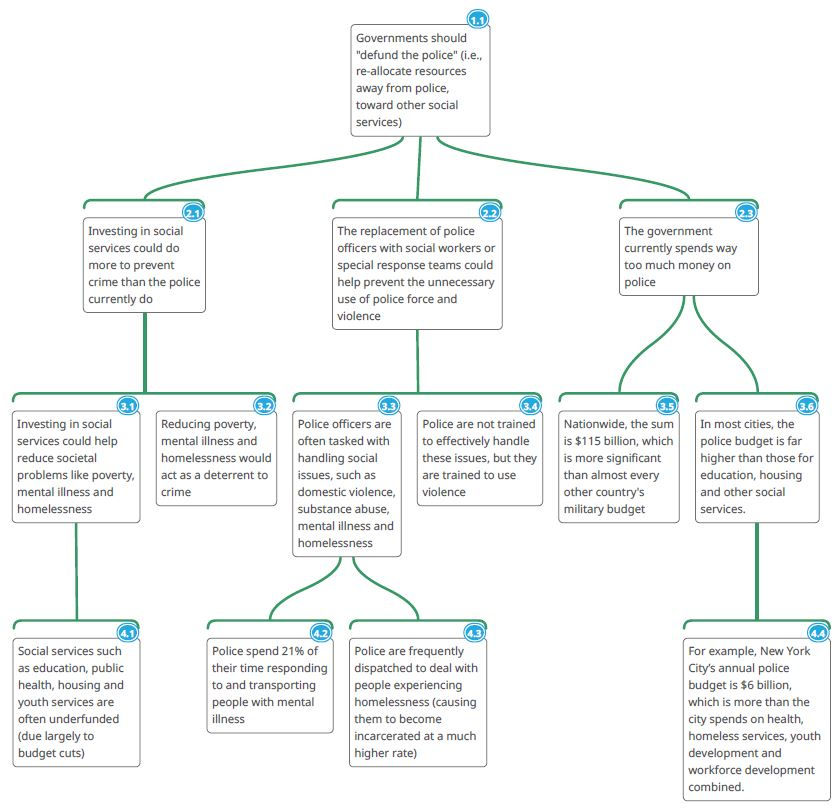Mapping a Real World Argument
- Jonathan Haber
- Aug 1, 2020
- 2 min read

To wrap up this month’s guest posts on argument mapping, I’ve asked Nathan Otey from ThinkerAnalytix to perform a Logic-Checker on a real-world editorial using principles for creating and analyzing argument maps you have been reading about in his previous posts here, here and here.
As you already learned, argument maps are particularly good at helping you keep track of complex arguments that might branch in multiple directions by representing the argument visually so you can see how the various parts of the argument fit together.
The argument Nathan has reviewed is based on this editorial which discusses a subject we haven’t covered yet here at LogicCheck: debates over defunding the police. Unlike many arguments over this heated topic, the editorial Nathan mapped is measured in its language and, importantly for this discussion, provides multiple lines of reasoning supporting its pro-defunding main claim/conclusion.
Translating any real-world arguments into structured statements built into an argument map involves the same principles of accuracy, charity and economy required to perform any type of logic checking. While today’s argument is more complex than others you have seen so far, Nathan has done the heavy lifting required to accurately represent the original prose argument into a structured format:

Given time and space constraints, I’ll leave it to you to think about how this argument map was put together from the original source material. But to see how many dumbbells it deserves, here’s Nathan’s analysis of the argument in LogicCheck’s first video post:
As Nathan mentioned, you can see the same version of the map he was using to illustrate the argument that was created with the MindMup tool you are free to learn more about here. And, as he declared, this argument wins 4/5 dumb bells, meaning it’s pretty strong.

Remember that this doesn’t mean the conclusion of the argument (that we should cut funding to police) is true. It just means that the editorial makes a better case for that position than would an argument that was not built on solid evidence and sound reasoning.
While he was not able to dissect every element of the argument, I hope you can get a sense of the kind of thoughtful analysis that results from having to review each premise in an argument for truth and falsehood, and every connection between claims for strength and weakness. His analysis included reviewing evidence supplied in the editorial (i.e., checking the facts) as well as bringing up objections, or at least things that should be part of the discussion (like the Ferguson Effect) when engaged in an argument that is ultimately about reducing crime.
It may seem like a lot of effort to get at the nut of what we are arguing about, and to consider the persuasiveness of the argument based on a review of evidence and analysis of the logic behind it. But, to play on an old phrase, if it seems like a lot of work thinking about a subject of importance, consider the amount of work needed to deal with the consequences if we don’t.





Comments